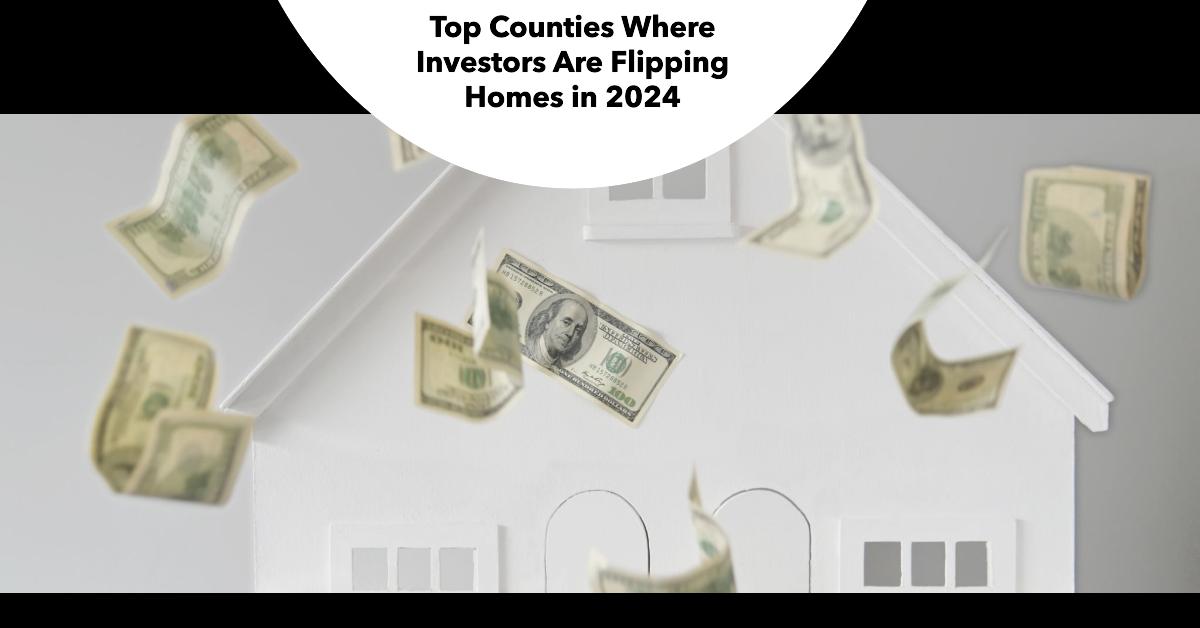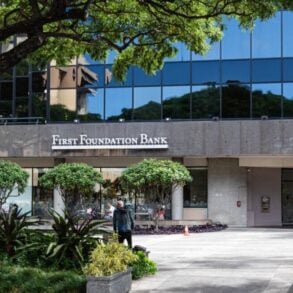
According to ATTOM’s Q1 2024 U.S. Home Flipping Report, the first quarter of 2024 saw a significant surge in home flipping activity. During this period, 67,817 single-family homes and condominiums were flipped in the United States. This accounted for 8.7 percent, or roughly one in every twelve home sales, from January through March.
Rising Home Flipping Rates
ATTOM’s analysis revealed a rise in the proportion of flipped homes to 8.7 percent in Q1 2024, up from 7.7 percent in Q4 2023. This marks the second consecutive quarterly increase, although it remains below the 9.8 percent recorded in Q1 2023.
The steady increase highlights a robust market for home flippers, driven by various factors including favorable economic conditions, increased buyer demand, and improved access to capital for renovations.
Improved Investor Returns
As flipping rates increased, so did investor returns. In Q1 2024, home flippers earned an average gross profit of 30.2 percent before expenses on homes sold. This trend marks the third time in four quarters that profit margins have risen, reversing a six-year decline. The profitability of home flipping has been buoyed by rising home prices in many markets, which allow flippers to sell at higher prices relative to their purchase and renovation costs.
Profit Margins
The typical profit margin for home flips in Q1 2024, based on the difference between median purchase and resale prices, was about 25 percentage points below the 2016 peak.
Despite renovation, mortgage, and property tax costs potentially offsetting these gains, the margin was higher than in Q4 2023 and above the decade-low of 25 percent in Q1 2023. This resurgence in profit margins suggests that flippers are becoming more adept at managing costs and timing their sales to maximize returns.
Gross Profits
Gross profits on typical flips nationwide rose to $72,375, though still below the 2022 high of around $80,000. This figure is up from $65,000 in Q4 2023 and about $10,000 higher than the lowest point last year. The increase in gross profits reflects a combination of higher resale values and more efficient renovation processes, enabling flippers to capture a larger share of the market’s appreciation.
Regional Flipping Trends
In 134 out of 173 metropolitan statistical areas across the U.S., comprising 77.5 percent of areas analyzed with sufficient data, the proportion of home flips relative to total home sales increased from Q4 2023 to Q1 2024. Most decreases observed were marginal, generally less than two percentage points.
Metropolitan statistical areas included in the analysis had populations of 200,000 or more and recorded at least 50 home flips in Q1 2024. This widespread increase in flipping activity underscores the broad-based nature of the trend, affecting both large and small markets across the country.
County-Level Analysis
Home flips constituted at least 10 percent of all home sales in 284 counties across the U.S. in Q1 2024. This figure represents 31.5 percent of the 902 counties analyzed with a minimum of 10 flips, marking a notable increase from the 22.7 percent of counties in Q4 2023. The significant rise in the number of counties with high flipping rates indicates that the practice is becoming more prevalent and geographically diverse, offering opportunities for investors in a variety of locations.
Factors Driving High Flipping Rates
Several factors contribute to the high flipping rates observed in these top counties:
- Economic Growth: Strong local economies with job growth and rising incomes support higher demand for housing, making it easier for flippers to sell renovated homes quickly and profitably.
- Housing Supply Constraints: In markets with limited housing supply, buyers are more willing to pay a premium for move-in-ready homes, benefiting flippers who can deliver quality renovations.
- Renovation Expertise: Investors in these counties often have extensive experience and networks, allowing them to manage renovation projects efficiently and cost-effectively.
- Financing Availability: Access to affordable financing for both purchases and renovations enables more investors to participate in flipping, increasing overall activity.
Top 10 Counties with Highest Home Flipping Rates
In this deep dive into ATTOM’s latest U.S. Home Flipping Report, we uncover the top 10 counties with the highest home flipping rates in Q1 2024. Among counties with 10 or more home flips in the first quarter, the highest flipping rates were observed in:
- Cobb County, GA: 23.5 percent
- Hickman County, TN: 20.3 percent
- Houston County, GA: 20.1 percent
- Clayton County, GA: 19.6 percent
- Douglas County, GA: 19.5 percent
- Hopewell City County, VA: 19.0 percent
- Bibb County, GA: 18.6 percent
- Botetourt County, VA: 18.1 percent
- Loudon County, TN: 17.3 percent
- Alamance County, NC: 17.2 percent
Cobb County, GA
Cobb County, GA, leads the nation with a flipping rate of 23.5 percent. The county’s proximity to Atlanta, combined with its strong local economy and growing population, makes it an attractive market for home flippers. Investors benefit from high demand and rising home prices, allowing for substantial profit margins.
Hickman County, TN
In Hickman County, TN, the flipping rate reached 20.3 percent. The rural charm and affordable property prices attract investors looking to capitalize on the county’s growing appeal to new residents seeking a quieter lifestyle away from urban centers.
Houston County, GA
Houston County, GA, saw a flipping rate of 20.1 percent. The county’s robust job market, driven by the presence of Robins Air Force Base, provides a steady stream of potential homebuyers, making it a favorable environment for flippers.
Clayton County, GA
Clayton County, GA, recorded a flipping rate of 19.6 percent. The county’s affordability and proximity to Atlanta contribute to its high flipping rate, as investors target first-time homebuyers and those seeking more affordable housing options.
Douglas County, GA
In Douglas County, GA, the flipping rate was 19.5 percent. The county’s strategic location along major highways and its economic growth make it a hotspot for investors looking to flip homes for profit.
Hopewell City County, VA
Hopewell City County, VA, achieved a flipping rate of 19.0 percent. The county’s historical charm and redevelopment efforts attract investors aiming to revitalize older properties and sell them at a premium.
Bibb County, GA
Bibb County, GA, with a flipping rate of 18.6 percent, benefits from the economic activities in Macon, the county seat. The local economy, bolstered by healthcare, education, and manufacturing sectors, supports strong housing demand.
Botetourt County, VA
Botetourt County, VA, had a flipping rate of 18.1 percent. The county’s scenic beauty and outdoor recreational opportunities attract both homebuyers and investors looking to capitalize on its growing desirability.
Loudon County, TN
In Loudon County, TN, the flipping rate was 17.3 percent. The county’s proximity to Knoxville and its lakeside attractions make it an appealing market for flippers aiming to meet the demand for vacation and second homes.
Alamance County, NC
Alamance County, NC, rounded out the top 10 with a flipping rate of 17.2 percent. The county’s location between Raleigh and Greensboro, along with its economic growth, makes it an attractive market for investors seeking profitable opportunities.
ALSO READ:
5 Reasons Why You Shouldn’t Flip Homes
This post was originally published on this site be sure to check out more of their content.









